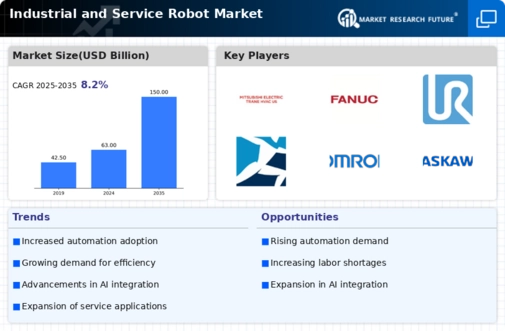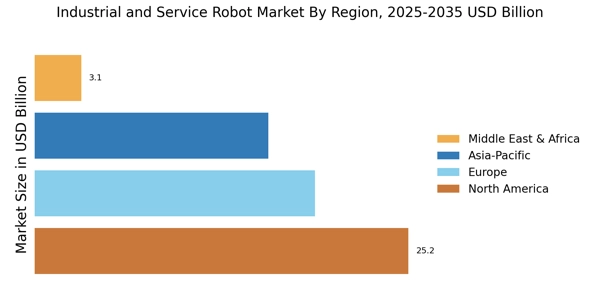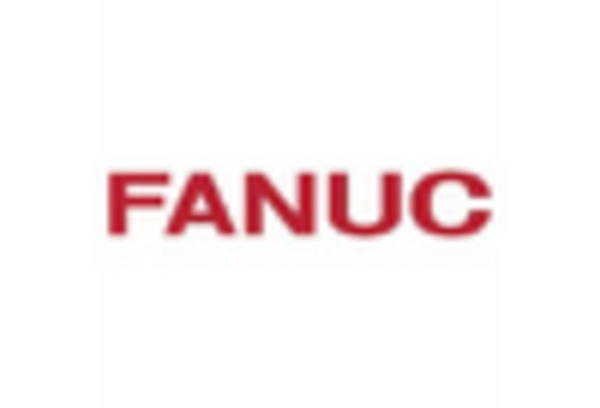Growing Labor Shortages
Labor shortages are becoming increasingly prevalent in various industries, significantly impacting the Industrial and Service Robot Market. As the workforce ages and fewer individuals enter skilled labor roles, companies are turning to robots to fill the gap. This shift is particularly evident in sectors such as manufacturing and logistics, where the demand for skilled labor is high. The adoption of robots not only mitigates the effects of labor shortages but also enhances operational efficiency. It is estimated that the integration of robots could help companies maintain productivity levels despite declining workforce numbers, thereby driving further growth in the market.
Rising Demand for Efficiency
The Industrial and Service Robot Market experiences a notable surge in demand for efficiency across various sectors. Companies are increasingly adopting automation to enhance productivity and reduce operational costs. In manufacturing, for instance, robots can operate continuously without fatigue, leading to higher output levels. According to recent data, the integration of robots in production lines has resulted in efficiency gains of up to 30%. This trend is not limited to manufacturing; service sectors are also leveraging robotic solutions to streamline operations. As businesses strive to remain competitive, the push for efficiency is likely to drive further investments in robotic technologies.
Expansion of E-commerce and Logistics
The expansion of e-commerce is a major catalyst for the Industrial and Service Robot Market. As online shopping continues to grow, logistics and warehousing operations are under pressure to improve efficiency and speed. Robots are increasingly being deployed in warehouses to automate picking, packing, and sorting processes. This trend is reflected in the logistics sector, where the use of robots is projected to increase significantly, with estimates indicating a growth rate of over 15% in the next few years. The need for faster and more efficient logistics solutions is likely to propel further investments in robotic technologies, thereby enhancing the overall market landscape.
Technological Advancements in Robotics
Technological advancements play a pivotal role in shaping the Industrial and Service Robot Market. Innovations in artificial intelligence, machine learning, and sensor technologies are enhancing the capabilities of robots, making them more versatile and efficient. For example, the development of advanced vision systems allows robots to perform complex tasks with precision. The market for industrial robots is projected to grow significantly, with estimates suggesting a compound annual growth rate of over 10% in the coming years. These advancements not only improve operational efficiency but also expand the range of applications for robots in various industries.
Increased Investment in Research and Development
Investment in research and development is a critical driver for the Industrial and Service Robot Market. Companies are allocating substantial resources to innovate and improve robotic technologies. This focus on R&D is essential for developing next-generation robots that can perform more complex tasks and adapt to dynamic environments. As a result, the market is witnessing a proliferation of new robotic solutions tailored to specific industry needs. The trend of increased investment in R&D is expected to continue, potentially leading to breakthroughs that could redefine the capabilities of robots in both industrial and service applications.

















Leave a Comment